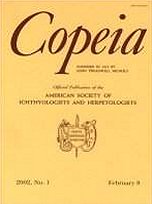We contrasted the summer and winter field body temperatures of the tropidurid lizard Microlophus peruvianus at the Paracas Peninsula in southern Peru. We also compared our winter data to those gathered by >Huey (1974) at the Illescas Peninsula in northern Peru to test the hypothesis that southern lizards would tolerate lower temperatures than northern lizards. Cloud cover is more persistent in Paracas than it is in Illescas. During the austral winter, lizards at Paracas reduced surface activity to midday hours and had body temperatures below the mean set-point temperature (as measured in a photo-thermal gradient). Lizards from southern Peru were active over a wider range of temperatures than were lizards from Illescas. Mean body temperature of field-active lizards in the cloudy Paracas site was 33.0 ± 0.44 C, significantly lower than the mean field body temperature at the sunnier Illescas site (36.3 ± 0.26 C, t = −6.19, P < 0.001). Although thermal preferences tend to be conserved among related lizard species, we found considerable variation in body temperatures and activity patterns of two populations of this species.
How to translate text using browser tools
1 December 2005
Seasonal and Geographic Eurythermy in a Coastal Peruvian Lizard
Alessandro Catenazzi,
Jorge Carrillo,
Maureen A. Donnelly
ACCESS THE FULL ARTICLE





